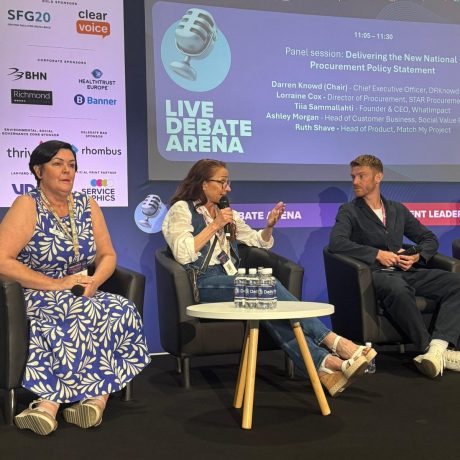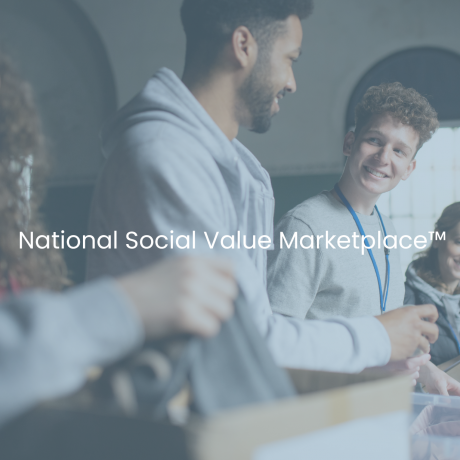At whatimpact, we’re in constant dialogue with local authorities, central government bodies, NHS organisations, and housing associations. A key theme has emerged from these conversations: public sector bodies are putting increasing focus on how social value is embedded into procurement.
The Government’s National Procurement Policy Statement (NPPS) provides strategic direction and sets out focus areas that contracting authorities should prioritise. These include tackling economic inequality, improving social wellbeing, and addressing environmental concerns. But while the intent is clear, the implementation of this policy varies significantly.
Buyers are using a wide range of frameworks — from the Government’s Social Value Model, to the TOMs (Themes, Outcomes and Measures) system, to bespoke frameworks — often applying them with very different practices. There is a huge interest in delivering impact through supplier–VCSE partnerships. However, the fragmented landscape is leading to a fundamental challenge: are we really enabling suppliers to deliver long-term, meaningful social value? Are we truly supporting outcomes and change in communities?
The Pitfall of Ad Hoc Contributions
One of the problematic trends we’ve observed in supplier–VCSE partnerships is an over-reliance on short-term, ad hoc contributions. In some tenders, suppliers are handed small lists of local VCSEs (voluntary, community, and social enterprises) along with one-off resource requests. These lists often overlook regional and national VCSEs that could deliver scalable and strategic social value.
The requests might include a donation to a food bank, participation in a litter-picking campaign, or replacing a few pieces of furniture in a community hall. While such actions can have short-term benefits, they rarely align with the supplier’s long-term strategy or strengths as these requests vary from public sector buyer to another. Supplier contributions are therefore sporadic actions with no golden thread.
And let’s not forget the scale: most public sector contracts span multiple years, involve significant value, and engage suppliers with substantial resources and capacity to deliver much more.
Even worse, these practices can ignore existing partnerships suppliers may already have with VCSEs — relationships that could drive far greater impact if given the space and flexibility to grow.
This approach doesn’t foster embedded, strategic social value delivery. Instead, it fuels a compliance-driven mindset — one where suppliers do just enough to meet the brief and not engaging any further or build a true partnership.
Shifting to Outcome-Based Targets
We believe the solution lies in shifting from prescriptive actions to outcome-focused social value.
Public sector buyers should clearly articulate the goals they want to achieve — whether that’s reducing child poverty, improving mental health, promoting biodiversity, or supporting job creation for underrepresented groups — and allow suppliers the freedom to determine the best ways to deliver those outcomes.
Let’s take the example of an outcome target to reduce child poverty in a specific area. That outcome can be achieved through multiple avenues, such as:
· Partnering with charities that support education or after-school programmes.
· Funding vocational training for parents to improve employment prospects.
· Supporting access to sports, arts, or cultural activities that build skills and confidence.
This approach empowers suppliers to build on their core capabilities — aligning social value delivery with what they do best. Whether it’s through digital tools, grant funding, service access, or volunteering hours, each supplier can shape a strategy that fits their unique strengths and the needs of the local community.
Different sectors bring different resources:
· A tech company might not have a physical presence in the contract area but can contribute through digital resources or online mentoring.
· A construction firm may be embedded locally and able to offer employment, apprenticeships, and supply chain opportunities to underrepresented groups.
A Smarter Approach to Public Procurement
To unlock meaningful, lasting social value, public sector organisations must shift from micromanaged activity lists to outcome-based strategies — and trust suppliers to innovate using their expertise and existing partnerships.
Rigid, one-size-fits-all approaches may offer quick wins, but they miss the bigger picture. We need a system that enables long-term partnerships, deep local engagement, and measurable impact that extends far beyond the lifespan of a single contract.
About whatimpact
At whatimpact, we offer an advanced local social value marketplace — a nationwide platform connecting suppliers with hyper-local VCSEs. Our platform features both small and large initiatives aligned with the major procurement frameworks, including the TOM System and the Government’s Social Value Model.
We help SMEs and large corporates to plan, deliver, and report social value activity with ease, impact, and purpose — supporting both compliance and community transformation.





